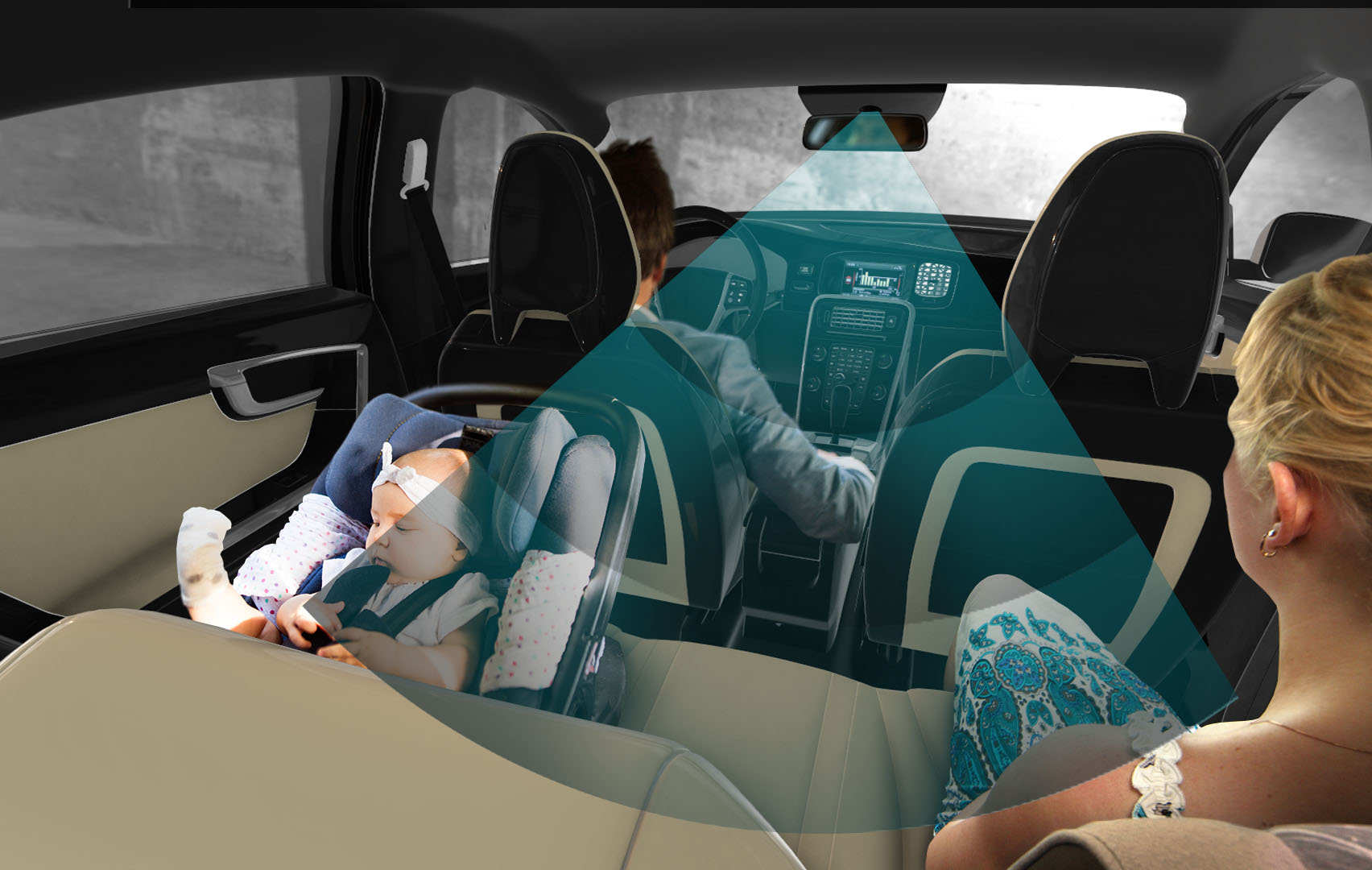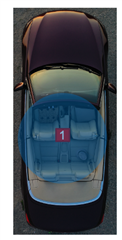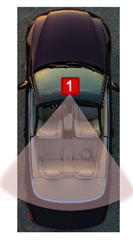SSZT088 March 2022 AWR6843AOP

Technology companies are looking to expand into more intelligent and advanced sensing in vehicle interiors. Consumers want to see applications such as child presence detection, occupant detection, vital-sign monitoring and gesture recognition. The in-cabin space currently has various camera-based and time-of-flight solutions; however, most of these are limited to only one application per device. Designers must then include multiple devices in the system for more functionality, increasing system cost and power consumption.
How Multimodal Functionality Works
With TI millimeter wave (mmWave) technology, the AWR6843AOP antenna-on-package automotive radar sensor enables systems to perform multiple applications, all from one intelligent sensor. Because it is multimodal (that is, can operate in different modes), it is possible to program the AWR6843AOP to perform various functions based on the state of the vehicle or position of an occupant. Possibilities include gesture control combined with intruder detection, gesture control combined with child presence detection, occupant detection combined with vital-sign detection, and gesture control combined with vital-sign detection. The ability to perform multiple applications gives users more flexibility with their comfort control, as well as peace of mind with safety features.
Let's explore the possibilities of these multimodal function combinations.
Gesture Control Combined with Intruder or Child Presence Detection
A camera-based solution might miss the ability to sense a baby in the back seat, especially when covered up by a blanket. Combining these functions is based on the state of the vehicle, where the sensor could be in gesture detection mode whenever the car is powered on, and switch to child presence or intruder detection mode when the vehicle is powered off. TI sensors are able to sense through various materials and can also sense heart and breathing rates.
Occupant Detection Combined with Vital-sign Detection
Occupant detection combined with vital-sign detection is more focused on the driver (as they are usually the vital-sign targets), but the modes could also switch off based on whenever the vehicle is in motion, triggering occupant detection mode to focus on point-cloud data and then transitioning to vital-sign detection mode to track heart and breathing rates whenever the car is stopped at a stoplight or stop sign.
Gesture Control Combined with Vital-sign Detection
For this function, the sensor is placed in the front dash space or behind the steering wheel; modes then change based on where the driver places their hand. It is possible to program gesture detection to begin whenever the driver's hand enters a certain finite range bin; whenever the hand is not in this space, the sensor could focus on vital-sign detection.
Possible Sensor Placements
There are a multitude of possible sensor placements, but the most common locations are:
- The overhead space, which enables a wide field of view of the entire cabin and can be used for general occupant detection or vertical gesture control to potentially fulfill applications such as turning lights on and off,
adjusting cabin temperatures, opening and closing the sunroof, and even dropping down a TV screen.
 Figure 1 Overhead Placement Sensing
Figure 1 Overhead Placement Sensing - The front dash space makes the most sense for gesture control applications, such as human machine interface control of the usual touchscreen and buttons area. Another option is combining front dash placement with occupant (child presence) detection and vital-sign monitoring. With gesture control, the driver could adjust the radio station, volume of music, car temperature, navigation, entering and exiting applications, and more.
Current gesture detection technology can detect eight gestures: swiping left and right, swiping up and down, twirling clockwise and counterclockwise, and pushing forward and back with a flat palm. An example could be a user swiping right through different applications, pushing forward to access a music application, swiping down through their playlists, pushing forward to select a song, and twirling to increase the volume.
 Figure 2 Front Dash Placement Sensing
Figure 2 Front Dash Placement Sensing- Sensors placed on the back of the first-row seats can facilitate more personalized in-cabin application control for passengers in the back seat, as well for occupant detection. For example, smaller children are currently unable to reach multimedia screens installed on the back of front-row seats because of their car-seat restraints. With gesture control, they can swipe through menu options and adjust the volume with twirls.
Conclusion
TI's AWR6843AOP sensor enables more functionality in automotive in-cabin systems to increase usability for consumers, covering applications such as gesture control, intruder and child presence detection, and vital-sign detection all with one sensor.
Additional Resources
- Download the AWR6843AOP data sheet.
- Watch the video, "Gesture Detection for Automotive In-Cabin Applications."
- Check out the Automotive mmWave Radar Gesture Control Reference Design for more information on gesture control, including the processing chain.
- Order the AWR6843AOP evaluation module and test the reference software.